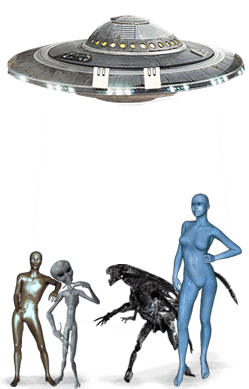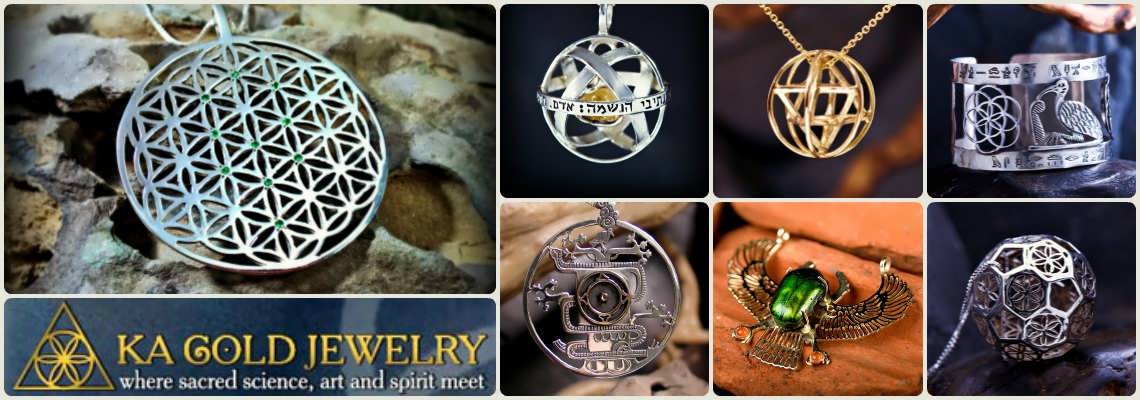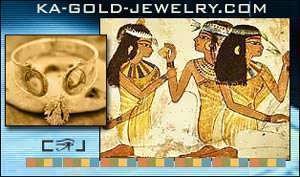Home › Forums › Spirituality Matters › Religion & Spirituality › The God Chemical: Brain Chemistry and Mysticism
- This topic has 5 voices and 14 replies.
-
AuthorPosts
-
May 18, 2009 at 8:30 pm #6974
opalescent
MemberThe Science of Spirituality
From National Public Radio’s “All Things Considered”, May 18, 2009
by Barbara Bradley Hagerty
first of a five-part seriesFor much of the 20th century, mainstream science shied away from studying spirituality.
Sigmund Freud declared God to be a delusion, and others maintained that God, if there is such a thing, is beyond the tools of science to measure.
But now, some researchers are using new technologies to try to understand spiritual experience. They’re peering into our brains and studying our bodies to look for circumstantial evidence of a spiritual world. The search is in its infancy, and scientists doubt they will ever be able to prove — or disprove — the existence of God.
I spent a year exploring the emerging science of spirituality for my book, Fingerprints of God. One of the questions raised by my reporting: Is an encounter with God merely a chemical reaction?
Peyote Healing
The search for that answer led me to my first peyote ceremony, on a mountaintop on the Navajo reservation at Lukachukai, Ariz.
While Fred Harvey, an 87-year-old roadman, or high priest, warmed up his voice, members of his family prepared the peyote, a cactus that induces visions when ingested. Using peyote to touch the spiritual world has been central to the Navajo religion for hundreds of years.
Fred Harvey, an 87-year-old roadman, or high priest, on the Navajo reservation at Lukachukai, Ariz., led a peyote ceremony. Using peyote, a cactus that induces visions when ingested, has been central to the Navajo religion for hundreds of years.Andy Harvey, a ceremony participant, said peyote serves as a mediator between the human world and the divine.
“Sometimes we ask the peyote to help us cleanse the illnesses away and cleanse our mental being, our spiritual being,” he said. “And we believe that’s what peyote does, too. That’s why we call it a sacrament, a sacred herb.”
At 9 p.m., 32 of us crawled into the teepee; for the next 11 hours, the young men drummed, the roadman prayed, and everyone but me ingested a lot of peyote. Sometime around midnight, the subject of the ceremony — a Navajo woman named Mary Ann — spoke up.
“I want to confess to the fire,” she said.
She said she had suffered from shingles for the past two months, and she needed the peyote to heal her. She said she believed she had harmed a man some 20 years earlier, and his spirit had been plaguing her ever since.
“I need him to forgive me,” she cried. “I know I’m in pain because he hasn’t forgiven me.”
Two more hours had passed when Mary Ann suddenly cried, “The shingles are gone! The peyote has healed me!”
After the ceremony, Mary Ann said she was, in her words, “too peyoted up” to talk. I called her on the phone two months later. She said while in the teepee, she saw the spirit of the man she had harmed and asked him for forgiveness.
“He came in front of me, and he just left me,” she said. “And that’s when my pain stopped. He forgave me.”
Perhaps. Or perhaps the trinity of prayer, drumming and drug relieved her stress — and her shingles.
Lessons From The ’60s
Scientists have long been intrigued by mystical experiences like Mary Ann’s. A person prays and gets better. A car crash victim feels himself floating above his body. For years, scientists have wondered why these things occur — or even if they’re real. So they’re taking drugs like peyote out of the teepee and into the laboratory to find out more.
The first major rigorous study of psychedelics and spirituality occurred on Good Friday in 1962. In the basement of Marsh Chapel at Boston University, researchers from Harvard gave 10 divinity students LSD to see if the sacred setting, combined with drugs, would spark a mystical experience. It did. Soon afterward, researchers at other prominent universities began administering psychedelic drugs to volunteers in controlled settings.
By the end of the 1960s, the U.S. government had had enough of Timothy Leary’s call to “turn on, tune in, drop out” and were concerned that a generation was conducting its own uncontrolled experiments with drugs and spirituality. In the early ’70s, the experiments ended.
Until now.
A couple of months after the peyote ceremony, I follow Roland Griffiths into his mushroom mecca in the middle of Johns Hopkins University Medical Center in Baltimore.
The lighting is low, the carpeting plush. There’s a cross on the wall, a statue of Buddha, a Shinto shrine. In the middle of the room is a sofa where volunteers can lie down after they’ve ingested a capsule of psilocybin, the psychedelic ingredient in mushrooms. Griffiths, a neuro-pharmacologist, is the lead investigator in the first major study of drugs and spirituality since the 1970s. Why, I ask, would he launch such controversial research?
“I was just curious,” Griffiths says simply.
Finding The Mystical In A Mushroom Trip
Actually, Griffiths says that when he took up meditation 15 years ago, he began thinking differently about the nature of reality. He wondered: What if he could study what happens to the brain when people enjoy spiritual experiences? Griffiths recruited 36 people. They were all middle-aged and stable, had an active spiritual practice — whether Christian, Jewish or other — and were willing to take the trip of their lives. Among them was 56-year-old Karin Sokel.
“They asked me to lay down with headphones and the most powerful music I’ve ever heard,” Sokel recalls. “I was blindfolded, and I began to have my experience.”
Sokel was involved in five sessions, and she describes them as the most profound experiences of her life.
“I know that I had a merging with what I call oneness, I am,” she says. “There was a time that I was being gently pulled into it, and I saw it as light. … It isn’t even describable. It’s not just light; it’s love.”
Sokel’s words echo those of mystics through the ages, who talked of a physical union with God, a peek into eternity or an out-of-body experience. Griffiths says 70 percent of the subjects had full-blown mystical experiences, which Griffiths calls “remarkable.”
Griffiths’ research offers clues about the mechanics of spiritual mystery, says neuroscientist Solomon Snyder.
Serotonin And The Mechanism Of Mysticism
“If we assume that the psychedelic, drug-induced state is very much like the mystical state,” Snyder says, “then if we find out the molecular mechanism of the action of the drug, then you could say that we have some insight into what’s going on in the brains of mystics.”
Snyder, who is chairman of the neuroscience department at Johns Hopkins and was not involved in the study, says scientists suspect that a key player in mystical experience is the serotonin system. The neurotransmitter serotonin affects the parts of the brain that relate to emotions and perceptions. Chemically, peyote, LSD and other psychedelics look a lot like serotonin, and they activate the same receptor.
Think of that serotonin receptor as a bouncer at a nightclub. The party’s a bit tame, and when the bouncer spots the fun chemical — the active ingredient in psilocybin — he lets Mr. Fun into the club. Suddenly, the party picks up and the brain chemicals are burning up the floor.
Let the spiritual experience begin.
New Avenues To Study Spirituality In The BrainOf course, it’s more complicated than that. There are other chemicals and receptors at play, and, of course, mystical experience happens without drugs — through prayer, meditation, chanting and fasting.
But Griffiths says this study will open new vistas into the science of spirituality. Until now, he says, we couldn’t systematically study mystical states.
“You can’t just say, ‘Well, come into the laboratory and pray for two hours, and then we’re going to image your brain because we know you’ll have a mystical experience then!’ ” he says. “We’re talking about rates of experience that may occur once in a lifetime or once every year or two.”
But if you can chemically induce the equivalent of a spiritual experience, he says, you can slide a person into a brain scanner and observe which parts of the brain light up and what neural networks are used.
LSD And Life After DeathGriffiths has now launched other studies that pick up work begun a half-century ago.
In the 1950s and ’60s, researchers studied the effect of LSD trips on patients with end-stage cancer. Many of those who enjoyed mystical experiences, researchers found, returned from their trips believing that life continues after death, and with reduced pain — or at least a different perspective on pain. Griffiths is now recruiting patients to test whether a synthetic spiritual experience might aid them in any way.
Still, Griffiths says all the studies in the world can’t answer his central question about spirituality: “Why does that occur? Why has the human organism been engineered, if you will, for this experience?”
It’s a question that haunts other scientists, as well. They want to know: Is there a sweet spot for spirituality in the brain?
Part two of this series looks at the search for the God spot.May 21, 2009 at 7:49 pm #12457Zingdad
MemberVery interesting and informative read. Thanks Opal!
Hallucinogenics are very curious substances. Not to be taken lightly or toyed with, that is certain. But under the right circumstances there is no argument that they can certainly mediate some very powerful and transformative experiences.
August 26, 2009 at 7:53 pm #12458Greg Daugherty
MemberIndeed. I was one of those who spent a few years in the 1960s using LSD to expand my understanding of the unseen. I think it is THE most valuable drug ever discovered, and I’m very sad that pharmaceutical LSD is not available. Mushrooms and peyote pale compared to LSD. But I won’t use non-pharmaceutical LSD, or recommend its use. I read a graduate thesis on the history of LSD, and it wasn’t until non-pharmaceutical LSD was available that bad trips began to be noted.
August 26, 2009 at 11:47 pm #12459opalescent
Member@Greg Daugherty wrote:
it wasn’t until non-pharmaceutical LSD was available that bad trips began to be noted.
I have heard similar reminiscences from ’60s psychonauts about LSD-25, and I’m glad I’ve never tried the inferior stuff. I think it’d short circuit my brain. 😯
Interesting that fairly MSM would do this story, tho, isn’t it?
August 27, 2009 at 12:29 am #12460Gaian
MemberPersonally, although I have taken LSD and Ecstacy, I’ll never do them again for the very reason that they ARE pharmaceutically “designed”. I now only ingest those of nature’s design and only with spiritual intent – and they never fail to “show” me exactly what it is I need to “see” at that time.
Last time I did ‘shrooms was with friends. We went outside and we could see the fractal designs of the clouds in the night sky, but what really blew us away was actually seeing the earth’s grid. We all saw the same things, pointed them out, talked about them, etc.
I’m not recommending that anyone do psychedelics for they are not meant for the faint of heart or those with ill intent. I find them to be powerfully reflective of our inner selves.
Namaste,
Gaian
August 27, 2009 at 12:14 pm #12461opalescent
MemberRobert Anton Wilson on the Acceleration to 2012, Expanded Awareness, and Reality Tunnels
[youtube:ovzvyper]http://www.youtube.com/watch?v=wVC0FcSRxL8[/youtube:ovzvyper]
August 27, 2009 at 2:39 pm #12462Greg Daugherty
MemberAh, the age-old question of what is natural and what isn’t. Isolated portions of nature are still nature is how I see it. God is in all things, is also how I see it. I’m definitely a nature-loving hippie who wanders in the woods and consumes “dangerous” plants….but I’m also in an environment that has countless new “chemicals” coursing through it at all times. I mean drinking the water these days involves taking several drugs. Is our view of reality changed by consuming PCBs? I’m sure of it. My point above was that of all the mind altering pieces of nature that I’ve consumed, LSD is far above the rest, and it isn’t available today as a result. It’s sad.
August 27, 2009 at 2:50 pm #12463Greg Daugherty
MemberGreat video, Maryann! Thanks!!!
August 27, 2009 at 3:10 pm #12464opalescent
MemberLSD’s precursor, LSA (amide vs diethylamide) is found in certain varieties of morning glory seeds. Nature comes fully stocked for consciousness expansion!
I just found a wonderful video series (playlist here) on the ancient civilization centered in present-day Ukraine. What did they find? Traces of cannabis… everywhere. The prof talking about it (toward the end of the lecture) says it obviously wasn’t for single use, but was for the entire village/city. Everybody. This was tens of thousands of years BC, and you can still see this tradition alive in some of north India’s festivals.
Oh, the drinking water, what a mess. I remember the way to dispose of leftover pharmaceuticals was to flush them down the toilet. Water treatment plants don’t even deal with it, and so many cities have prozac etc pouring out of the taps. And fluoride. So many stores sell bottled water marketed towards well-meaning parents, with added poison… I mean fluoride. Yeah. Bless it!
August 27, 2009 at 9:45 pm #12465Gaian
MemberI just read the book ‘Born to Run’ by Christopher McDougall where he documents his experiences with ultra-running (distances between 50 and several hundred miles!) with the Tarahumaura Indians in the Copper Canyon area of Mexico (the Mexican Outback).
In the book, he describes a drink called Iskiate, which is made from Chia seeds (yes, the same seeds in Chia Pets) dissolved with sugar and a squirt of lime. Apparently, it instantly makes you feel better (like a cure for hangovers, lack of sleep, general fatigue). Furthermore, the seeds are chock full o’ nutritional values ( omegas-3s, omega-6s, protein, calcium, iron, zinc, fiber and antioxidants). He states ‘In terms of nutritional content, a tablespoon of chia is like a smoothie make from salmon, spinach and human growth hormone.’ He goes on to say, ‘It goes down like fruit punch with a nice limey tang.’ I haven’t tried it yet, but I plan to. 😀
McDougall drank Iskiate himself and raved (pun intended) about its ‘magical’ effects. He didn’t, however, claim it to be a psychedelic or hallucinogenic drug. Just a wonderful pick-me-up!
Namaste,
Gaian
August 28, 2009 at 7:51 pm #12466Greg Daugherty
MemberHave you heard the story about why the Pope and Santa Claus have red and white uniforms? “Although most people see Christmas as a Christian holiday, most of the symbols and icons we associate with Christmas celebrations are actually derived from the shamanistic traditions of the tribal peoples of pre-Christian Northern Europe. The sacred mushroom of these people was the red and white amanita muscaria mushroom, also known as “fly agaric.” These mushrooms are now commonly seen in books of fairy tales, and are usually associated with magic and fairies. This is because they contain potent hallucinogenic compounds, and were used by ancient peoples for insight and transcendental experiences.” These are the mushrooms that are considered very deadly. Are they really?
August 28, 2009 at 7:52 pm #12467Greg Daugherty
MemberOops…forgot the link to go with the above quote: http://www.cannabisculture.com/articles/3136.html
October 28, 2009 at 4:51 pm #12468Bask
Member@Greg Daugherty wrote:
Mushrooms and peyote pale compared to LSD.
Funny how in my experience it’s the other way around.
Anyone who says this just never had a proper dose of mushrooms
Plus you can’t grow your own LSD, while cultivating mushrooms/cacti/plants is a lovely and easy hobby 😉Anyway, to each his own right?
Namasté
PS: About Amanita Muscaria…. if they were deadly I’d not be alive this current day 😛
But yeah, there’s so much non-sense and dis-information about substances that advocate self-responsibility and widened consciousness
As for Christianity, if you want a good portion of the story I suggest your read The Jesus Mysteries.
Basicly all of Christianity consists of stuff they “borrowed” from pagan religions, right before destroying them all together.October 28, 2009 at 5:10 pm #12469opalescent
MemberIf you’re a gardener, you can grow the precursor to LSD, see post above. I’ve never done either, but I have heard this on good authority a few times over. Baby Hawaiian Woodrose seeds too, I think. So you can have it all 😆 (see the Vaults of Erowid).
Cannabis and the Christ: Jesus Used Marijuana
Also, I haven’t watched this in years, but there was a lot of info here http://pot-tv.net/, I think all in the show “Burning Shiva Hour”.
October 29, 2009 at 11:12 am #12470Bask
Member@opalescent wrote:
If you’re a gardener, you can grow the precursor to LSD, see post above. I’ve never done either, but I have heard this on good authority a few times over. Baby Hawaiian Woodrose seeds too, I think. So you can have it all
Hahaha, ok ok, very true, but a precursor needs some pretty advanced methods to be turned into… 😛
LSA (Hawaiian Baby Woodrose) makes me nauseous 😐Anyway, I haven’t done psychedelics in a long time.
I did attend an Ayahuasca ceremony 1,5 year ago, which was beautiful, but very unsettling.
I came there with the intention to clean up old garbage and what I didn’t know is that I had to get through all that garbage to release it.
But the day after I felt totally happy and energised and clean like a new definition was given to the word clean 😀 -
AuthorPosts
- You must be logged in to reply to this topic.








